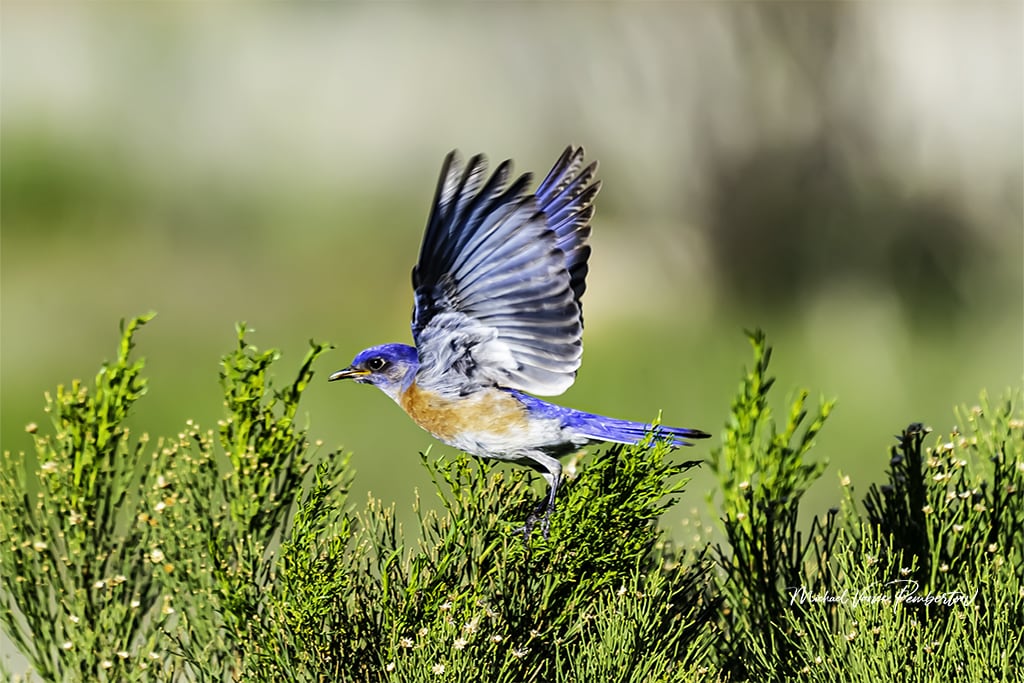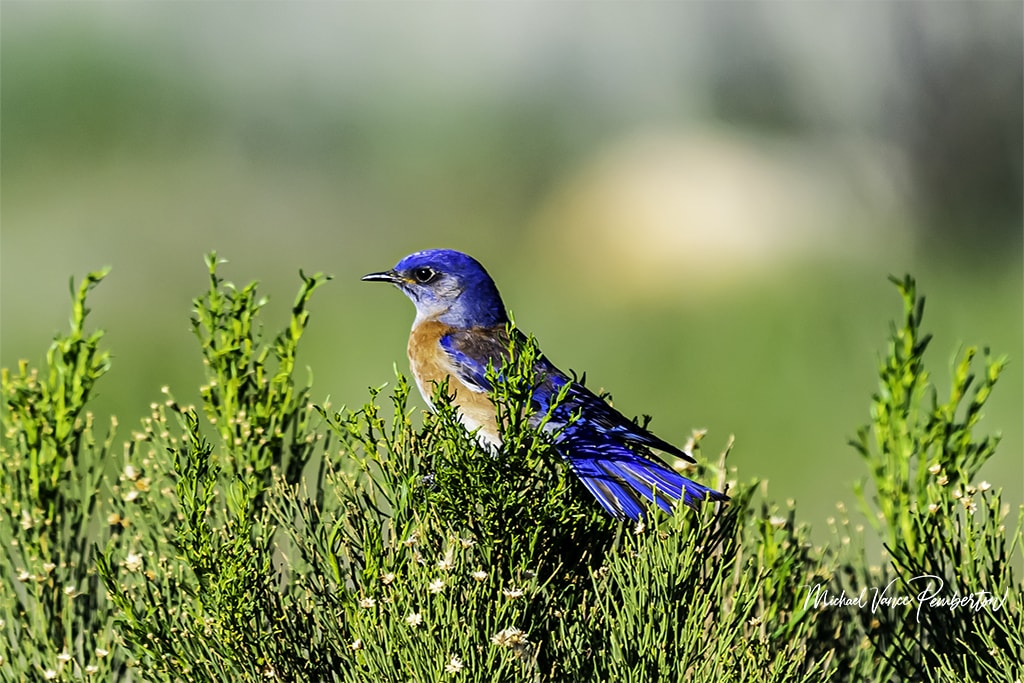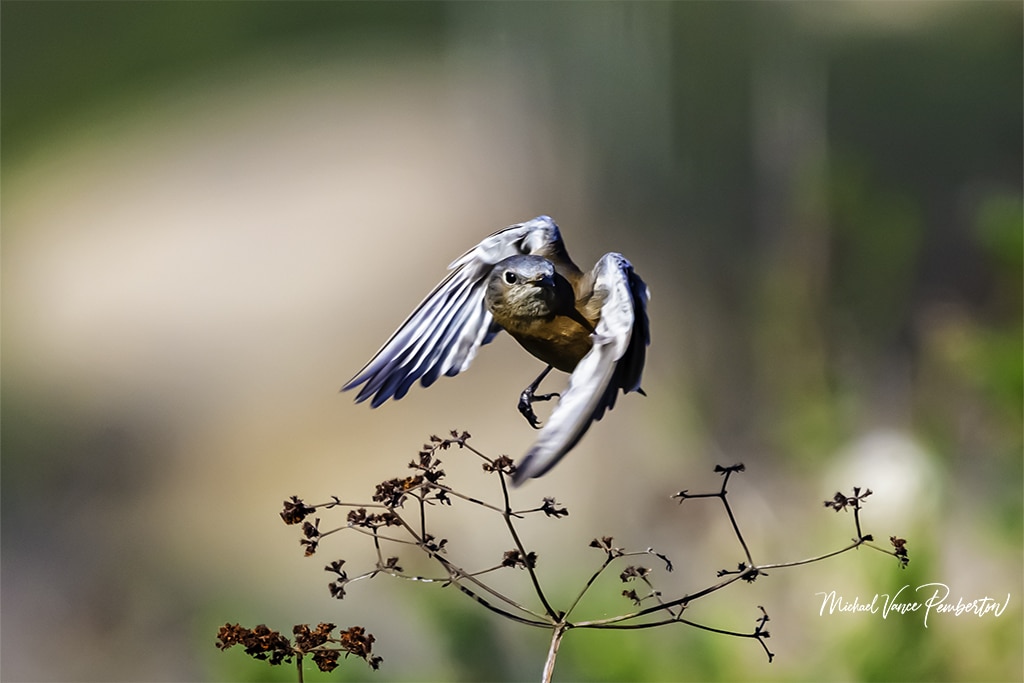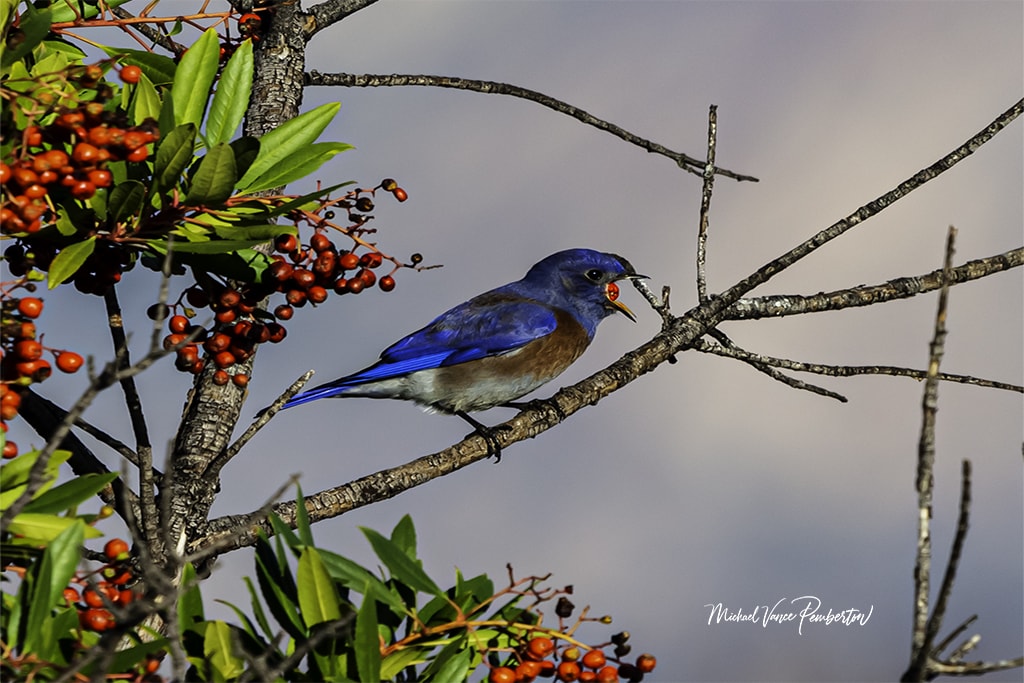
The Western Bluebird is one of my many favorite birds to photograph. The male with its deep purplish-blue on its throat and its upperparts. The chest has a reddish-brown color and sometimes on the back. The bird’s belly has a grey color to it.
The female is much duller in color than the male bird. It has more of a grey color. In addition, it has a solid grey throat. The juvenile is spotted in color.
It is so beautiful in good light when you can see all its colors in all their glory.

Breeding Range.
The breeding range is from southern British Columbia and Alberta all the way south to Baja, California.
You can find it east in New Mexico and parts of West Texas. They spend the winter in their breeding range, but some birds in the far north do leave and go a little south for the winter. I have seen them where I live in San Diego, California, all year.
Some Western Bluebirds stay in a permanent location, but I think most migrate back and forth. This is because their winter range depends on the amount of food they can find. So I guess that’s why some may stay in a specific location and then find a good food source. They ready have one, so why leave and risk starvation.

Western Bluebird Habitat.
You can find Western bluebirds in various areas like forests, desert terrains, and semi-open landscapes. I have come across them in trees and a brush; they like to eat berries from.
When out looking for them, look for trees with holes in them. Also, look along streams and creeks. You can use birding apps to learn their sounds. That has been the most considerable help to me when looking for birds. I usually hear them before I see them.

Western Bluebird Diet.
They eat insects and berries primarily. But mostly they eat insects as they can be found all year. I’ve seen them eat anything from ants to caterpillars and many grasshoppers, and I’ve seen them eat bees. The berries they eat are mostly mistletoe elderberry and juniper.

Nesting Habits.
When it comes time to nest, the male shows up first and starts to build the nest. Then, he defends his breeding territory by singing. Courtship is beautiful to witness when the male flutters in front of the female while singing. It’s like a dancer and a singer putting on a show all at once. I got to see this display last year.
The male, at times, was feeding the female, which I learned that’s part of the courtship. The pair I came across was in what I believe is an old Wood Pecker hole. They use grass weeds and small twigs to build their nest. The birds that I saw were so fun to watch because the male would come in with a twig, and the female would go through it out the hole.
He kept coming back with different twigs, and the nest started to take shape.
Western Bluebird Babies.
They have around between 3-8 pale blue eggs. First, the female does the incubation. Then, both males and females bring food for the babies to eat. Watching birds feed their young is so much fun to watch.
Conclusion.
The Western Bluebird is a bird that puts a smile on my face. I’m grateful for all the time I get to photograph birds. When you see them in an excellent light, their colors in the male come alive.


Recent Posts
In shadows cast by love's deceitful guise,He wandered blind, his heart the captive prize.Through realms unknown, where truth remained concealed,He followed trails of falsehood, unrevealed. Blinded...
Prepare to be amazed as the MCAS Cherry Point Air Show returns on May 11-12. This annual event, hosted by the Marine Corps Air Station (MCAS) Cherry Point in North Carolina, promises a weekend of...